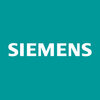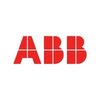Filter interviews by
Clear (1)
Suvarna Electricals Safety Officer Interview Questions and Answers
Suvarna Electricals Safety Officer Interview Experiences
1 interview found
I applied via Times Job and was interviewed in Jan 2018. There were 5 interview rounds.
Interview Questionnaire
4 Questions
- Q1. Salary expectations and in which city you have to work
- Ans.
I am looking for a competitive salary based on my qualifications and experience. I am open to working in any city for the right opportunity.
I am seeking a salary that is competitive and reflective of my qualifications and experience
I am flexible with regards to the city I work in, as long as it is the right opportunity for me
I am open to discussing salary and location further in order to reach a mutually beneficial agr
- Q2. Only above
- Q3. In which company you had to worked.
- Ans.
I have worked in XYZ Company as a Safety Officer for 5 years.
Worked in XYZ Company for 5 years as a Safety Officer
Implemented safety protocols and procedures to ensure a safe work environment
Conducted regular safety inspections and training sessions for employees
Collaborated with management to address safety concerns and improve safety measures
- Q4. Without loosing confidence
Interview Preparation Tips
Experience: Depending upon personal information, qualifications, work experience and others.
General Tips: Jobseeker must give an interview with confidently with maintain good mind and always alert
Skills: Quick Learning, Communication, Body Language, Problem Solving, Analytical Skills, Leadership, Presentation Skills, Time Management, Decision Making Skills
Duration: <1 week
Top trending discussions






Interview questions from similar companies

I applied via Naukri.com and was interviewed in Dec 2017. There were 4 interview rounds.
Interview Questionnaire
3 Questions
- Q1. Tell me about your self
- Ans.
Experienced safety officer with a background in industrial safety protocols and emergency response procedures.
Over 5 years of experience in implementing safety measures in industrial settings
Proficient in conducting safety audits and inspections to ensure compliance with regulations
Skilled in developing and implementing safety training programs for employees
Strong knowledge of emergency response protocols and procedure...
- Q2. Duties of safety Officer
- Ans.
Safety Officers are responsible for ensuring the safety of employees in the workplace by implementing safety protocols and procedures.
Develop and implement safety policies and procedures
Conduct regular safety inspections and audits
Investigate accidents and incidents to determine root causes
Provide safety training to employees
Ensure compliance with safety regulations and standards
Maintain safety records and reports
- Q3. Working improvement
Interview Preparation Tips
Experience: Written test
General Tips: Expended
Skills: Self-Awareness
Duration: <1 week

I applied via Naukri.com and was interviewed before Aug 2020. There were 5 interview rounds.
Interview Questionnaire
1 Question
- Q1. Various technical questions.
Interview Preparation Tips

I applied via Company Website and was interviewed before Oct 2023. There was 1 interview round.
(2 Questions)
- Q1. How You Face the Challenges in Power Plant ?
- Ans.
I face challenges in power plants by implementing strict safety protocols, conducting regular inspections, and providing continuous training to employees.
Implementing strict safety protocols to prevent accidents
Conducting regular inspections to identify potential hazards
Providing continuous training to employees on safety procedures
Collaborating with management to address safety concerns
Utilizing technology for monitor
- Q2. What is your 05 Best Initiatives in Previous Company.
- Ans.
Implemented safety training programs, conducted regular safety inspections, developed emergency response plans, organized safety drills, and improved safety communication channels.
Implemented safety training programs
Conducted regular safety inspections
Developed emergency response plans
Organized safety drills
Improved safety communication channels
Interview Preparation Tips
- Technical Support
- Safety Management
- Operations

I was interviewed before Feb 2024.
(1 Question)
- Q1. Roles and responsibilities of the Safety Officer
- Ans.
Safety Officer is responsible for ensuring workplace safety, implementing safety procedures, conducting safety inspections, and training employees on safety protocols.
Develop and implement safety policies and procedures
Conduct regular safety inspections and audits
Train employees on safety protocols and procedures
Investigate accidents and incidents to determine root causes
Ensure compliance with safety regulations and st...

I applied via Referral and was interviewed in Jun 2021. There was 1 interview round.
Interview Questionnaire
5 Questions
- Q1. Types of hazards
- Ans.
Hazards can be classified into physical, chemical, biological, ergonomic, and psychosocial.
Physical hazards include noise, vibration, radiation, and temperature extremes.
Chemical hazards include exposure to toxic substances like gases, liquids, and solids.
Biological hazards include exposure to viruses, bacteria, fungi, and other microorganisms.
Ergonomic hazards include repetitive motion, poor posture, and lifting heavy...
- Q2. About electrical safety/LOTO
- Q3. Heavy material erection safety/ Crane safety
- Q4. RWC / JSA / Risk Assessment
- Q5. Working at height safety
- Ans.
Working at height safety is crucial to prevent falls and injuries.
Ensure proper training and certification for workers
Use appropriate fall protection equipment such as harnesses and guardrails
Regularly inspect equipment and work areas for potential hazards
Implement a rescue plan in case of emergencies
Follow all relevant safety regulations and guidelines
Provide adequate supervision and communication among workers
Example...
Interview Preparation Tips


(2 Questions)
- Q1. What is the Safety
- Ans.
Safety refers to the measures and precautions taken to prevent accidents, injuries, and hazards in a particular environment.
Safety involves identifying potential risks and implementing strategies to mitigate them.
It includes creating and enforcing safety policies and procedures.
Safety officers conduct inspections, train employees, and investigate incidents.
Examples of safety measures include wearing personal protective...
- Q2. What is the risk
- Ans.
The risk refers to the potential for harm or loss that may arise from a hazardous situation or activity.
Risk is an inherent part of any workplace or activity and must be identified, assessed, and managed.
It involves evaluating the likelihood and severity of potential hazards and taking appropriate measures to control or mitigate them.
Examples of risks in a safety officer role may include workplace accidents, exposure t...
Interview Preparation Tips

Around the construction site
Chimney installation
Electrical hazard
Height work Safety
HIRA , JSA
Chimney installation
(2 Questions)
- Q1. Why chnge your current job
- Q2. What is your expectations
Interview Preparation Tips
Always free mind hokar interview Dena h

(1 Question)
- Q1. LOTO ,PTW ,lifting plan ,HIRA ,SWMS,Height work, excavation,
Interview Preparation Tips

I applied via Recruitment Consultant and was interviewed in Dec 2021. There was 1 interview round.
Interview Questionnaire
1 Question
- Q1. Compny plant name
- Ans.
The company plant is named XYZ Plant.
The XYZ Plant is a manufacturing facility located in [location].
It has been operational for [number of years].
The plant specializes in the production of [products].
Safety protocols and procedures are strictly followed to ensure the well-being of employees.
Regular safety inspections and audits are conducted to identify and mitigate potential hazards.
Training programs are implemented ...
Interview Preparation Tips
1 year experience in safety field
I want a wirk in Siemens
Recently Viewed
Tell us how to improve this page.
Interview Questions for Popular Designations
- Safety Supervisor Interview Questions
- Fire & Safety Officer Interview Questions
- Senior Safety Officer Interview Questions
- Safety Engineer Interview Questions
- Safety Manager Interview Questions
- Drug Safety Associate Interview Questions
- Safety Supervisor, Safety Officer Interview Questions
- Safety Executive Interview Questions
- Show more
Safety Officer Interview Questions from Similar Companies
Suvarna Electricals Safety Officer Reviews and Ratings
based on 2 reviews
Rating in categories
|
Electrician
8
salaries
| ₹0 L/yr - ₹0 L/yr |
|
Electrical Project Engineer
6
salaries
| ₹0 L/yr - ₹0 L/yr |
|
Purchase and Billing Executive
4
salaries
| ₹0 L/yr - ₹0 L/yr |
|
Electrical Design & Estimation Engineer
4
salaries
| ₹0 L/yr - ₹0 L/yr |
|
Diploma Electrical Engineer
4
salaries
| ₹0 L/yr - ₹0 L/yr |

Larsen & Toubro Limited

Siemens

ABB

BHEL
- Home >
- Interviews >
- Suvarna Electricals Interview Questions >
- Suvarna Electricals Safety Officer Interview Questions






